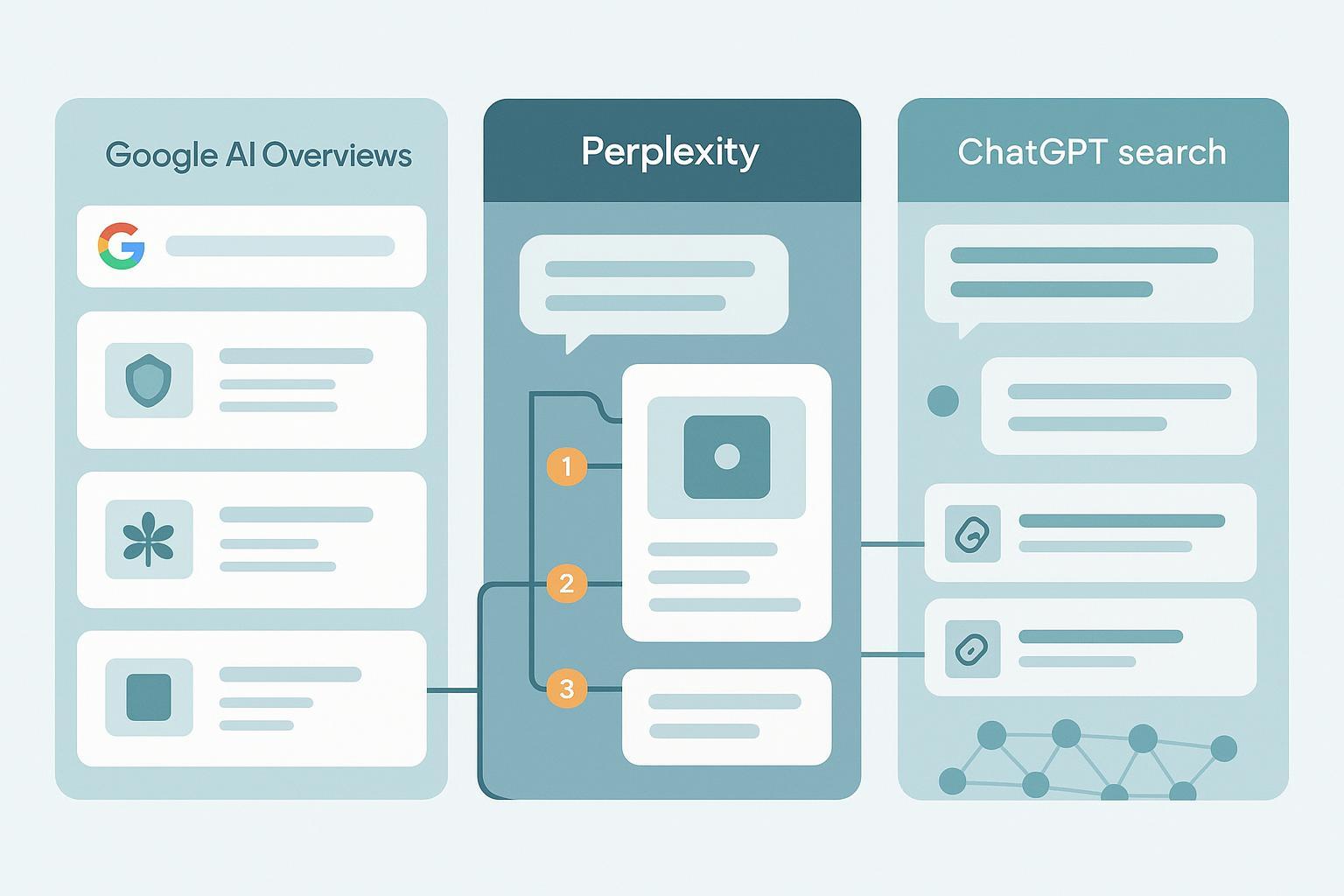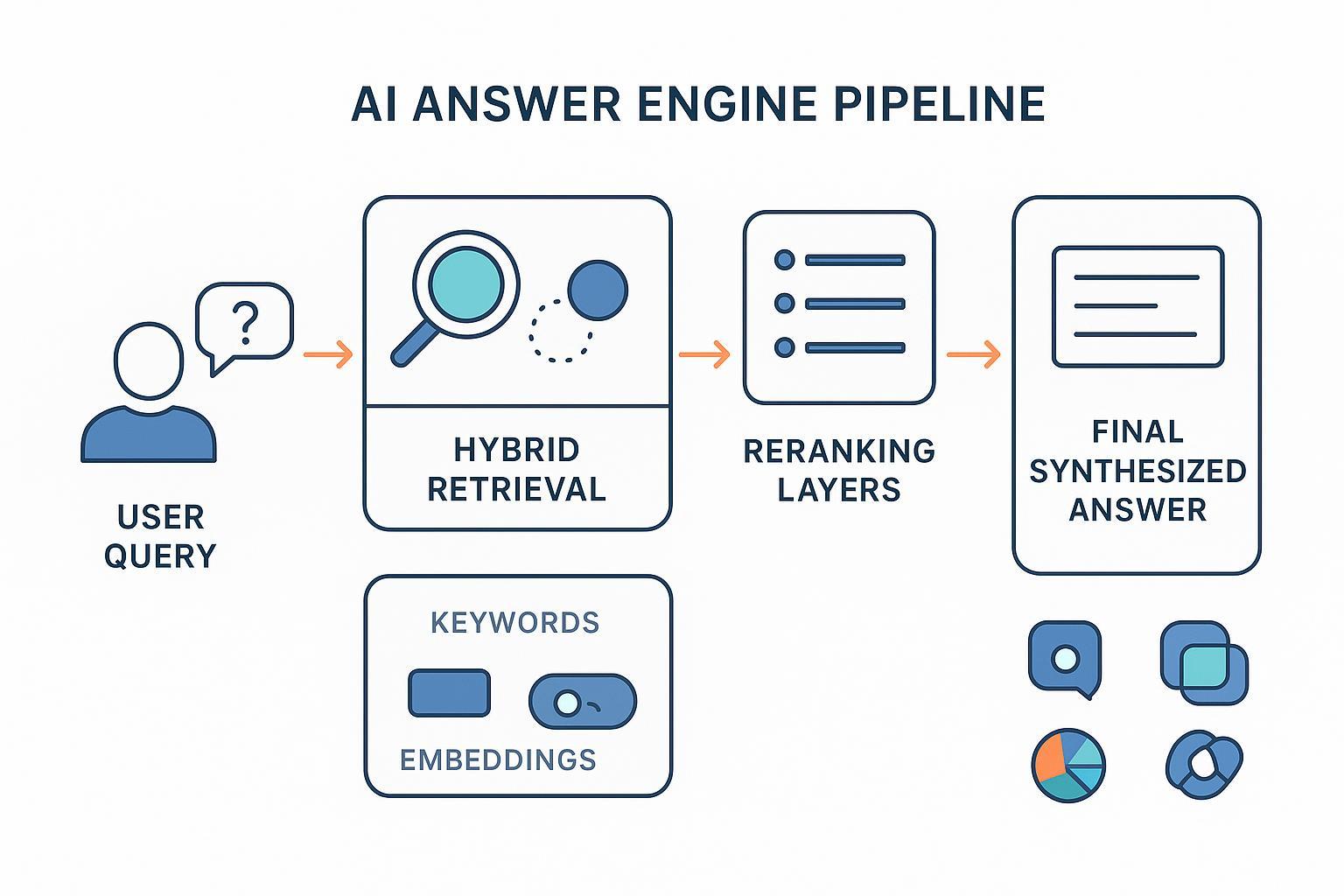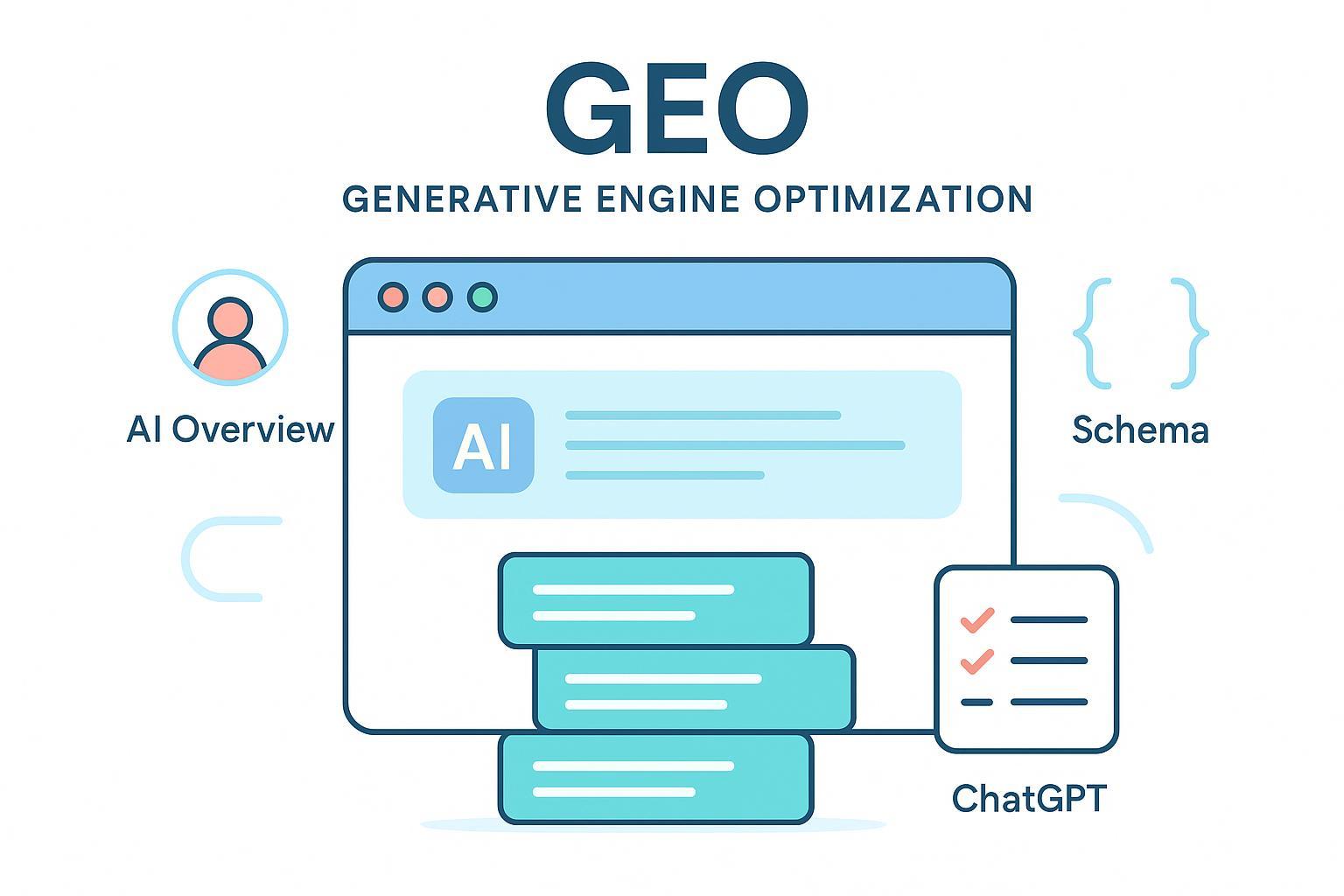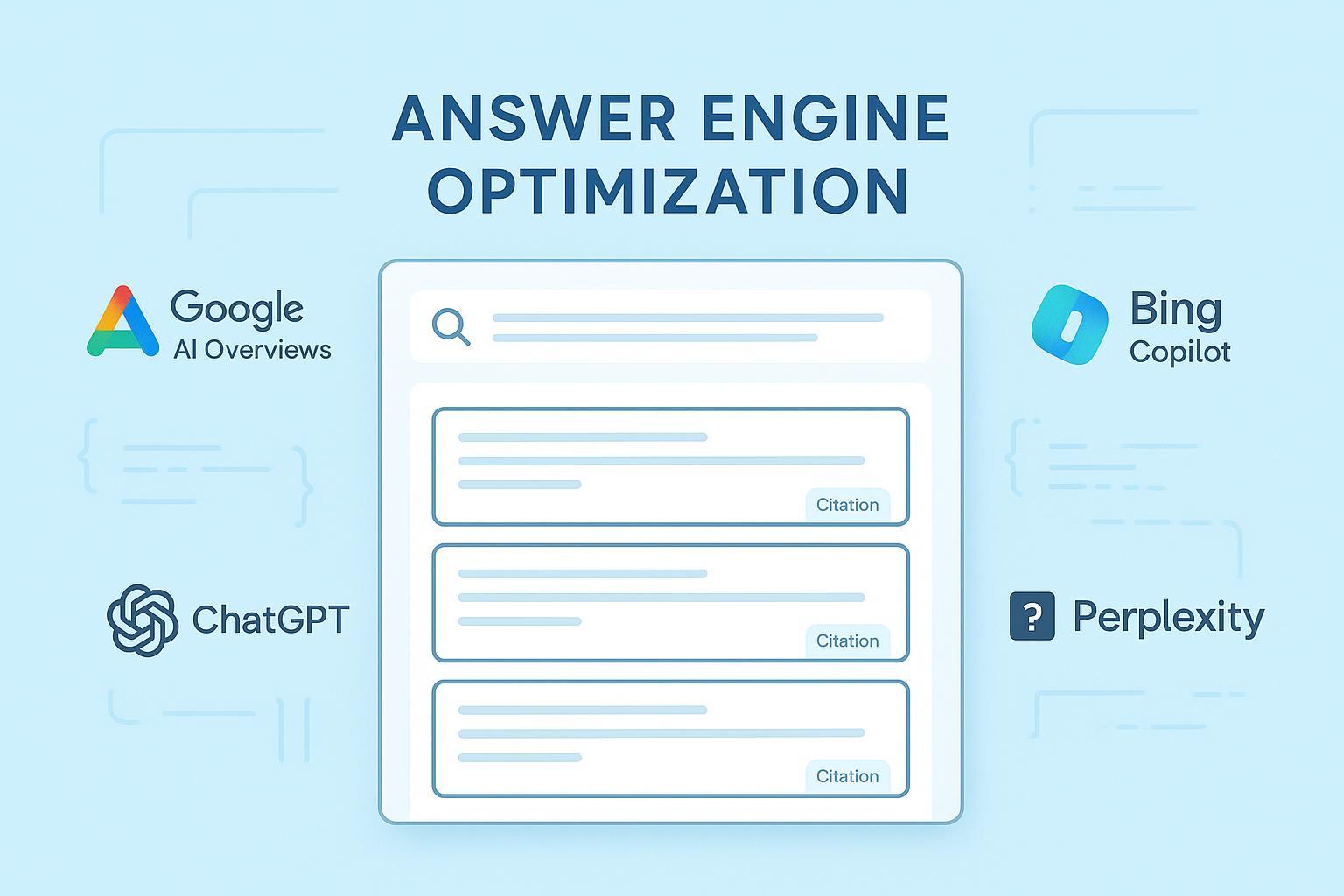Profound vs Peec AI for Agencies (2025): Best AI Search Visibility Tool?
Compare Profound and Peec AI for agencies in 2025. Side-by-side analysis of compliance, engine coverage, evidence, integrations, onboarding, and pricing to guide your decision.
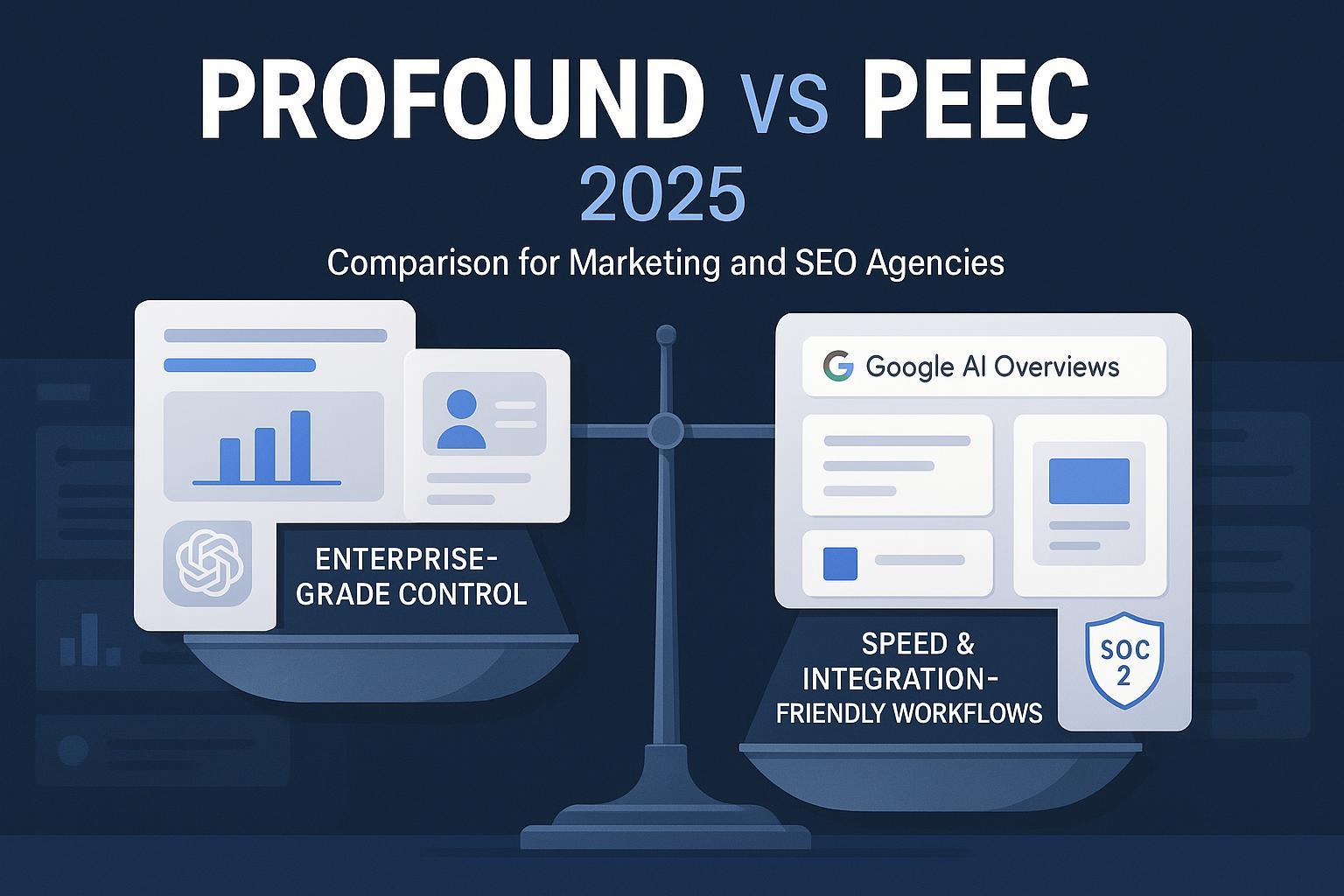
Agencies are under pressure in 2025 to answer a deceptively simple client question: “What does AI say about us?” Choosing the right AI search visibility stack comes down to how reliably each platform covers key engines (ChatGPT, Perplexity, Google AI Overviews/AI Mode), how fast you can onboard multi-client portfolios, the quality of evidence (citations, sentiment, conversation context), and whether your team can turn monitoring into a weekly action plan.
This comparison focuses on agency realities: multi-client operations, compliance reviews, BI/reporting flows, and time-to-first-insight. Where direct hands-on anecdotes aren’t available, we note these as common agency practices rather than verified vendor behavior.
What agencies actually care about
Model/engine coverage and reliability across ChatGPT, Perplexity, Google AI Overviews/AI Mode, Claude, Gemini, and Copilot.
Evidence quality for client decks: citations, sentiment fidelity, and conversation context.
Multi-client management: workspaces, roles/permissions, and clean client separation.
Compliance/security: SOC 2, SSO, data retention and auditability for regulated brands.
Integrations and exports: BI tools, CSV/API, and automation without brittle workarounds.
Time-to-first-insight and onboarding complexity for 5–10 client pilots.
Actionability: moving from monitoring to prioritized content updates and briefs.
If you need a refresher on how AI search visibility differs from traditional SEO, see the primer on What is Generative Engine Optimization (GEO).
Snapshot: Where each tool tends to fit
Compliance-heavy enterprise accounts: Profound usually has the edge due to enterprise posture (SOC 2 Type II, SSO) and depth on Google AI Overviews/AI Mode.
Budget-conscious agency pilots with integration-friendly workflows: Peec AI’s transparent tiers and prompt-level controls suit fast trials and incremental rollouts.
Action layer (briefs/workflows) vs monitoring-first: Profound leans into content action modules; Peec emphasizes tracking and prompt management.
Engine coverage and reliability
Profound publicly documents support for Google’s surfaces. Its article announcing support for Google AI Overviews (published 2024, updated 2025) details how customers can analyze AIO results, which is pivotal for brands focused on Google SERP changes; see the Profound Google AI Overviews support note. Profound also announced dedicated coverage for AI Mode in 2025; see the Profound Google AI Mode support post.
Peec AI’s pricing page clarifies which engines are included per tier. Starter/Pro plans include ChatGPT, Perplexity, and AIO; Enterprise adds options like Gemini, AI Mode, Claude, DeepSeek, Llama, and Grok as add-ons. See the Peec AI pricing and plan limits (2025) for specifics.
Interpretation for agencies: If Google visibility is driving client pressure, Profound’s explicit AIO/AI Mode documentation and research depth will matter in reviews and QBRs. If you’re piloting low-cost monitoring across a handful of prompts, Peec’s tier structure provides predictable ceilings.
Evidence quality: citations, sentiment, and conversation context
Profound publishes ongoing research on how volatile AI citations can be, reporting in 2025 that citations can change by up to “60% in just one month.” This matters when clients ask why references shift week to week. Profound also exposes platform-level differences in citation patterns across engines, useful context when stakeholders compare performance across ChatGPT vs Perplexity; see the Profound platform citation patterns overview.
Profound highlights modules such as Prompt Volumes and Conversation Explorer for analyzing real AI interactions and prompt trends, introduced in a general availability update; see Prompt Volumes GA (2025).
Peec AI emphasizes visibility and sentiment at the prompt level on marketing pages and provides a documented workspace-oriented setup for tracking; see the Peec Docs Quickstart (Workspaces). Detailed methodology for sentiment calculation is not public on either vendor’s site, so treat both as feature-level claims and request vendor walkthroughs during trials.
Agency lens: For weekly reporting, being able to export citations with dates and show conversation context dramatically reduces debate in client reviews. Profound’s published volatility research helps set expectations. Peec’s prompt-centric workflow can make it easier to align tracking with the exact questions clients care about.
Multi-client operations: workspaces, roles/permissions, reporting
Profound states enterprise features like SSO and role-based access; see the SOC 2 Type II certification announcement and its Trust Center referenced across enterprise pages. This generally correlates with smoother IT security reviews for large brands. Public pages do not explicitly document white-label reporting; confirm with sales if that’s a hard requirement.
Peec AI’s docs use “Workspace” as the unit of setup, which agencies typically map to clients; see the Quickstart. RBAC depth, white-label options, and audit logs are not fully documented; plan vendor validation for those items.
Practical inference: Agencies commonly pilot with 5–10 clients and limited prompts per client. In that scenario, Peec’s unlimited seats and prompt caps per plan can be predictable. For regulated accounts with strict access controls and SSO mandates, Profound’s enterprise features shorten procurement cycles.
Integrations and exports
Profound’s site and blog reference enterprise-grade exports and integrations, plus dedicated research and dashboards (e.g., Leaderboard). For public proof points on shareable outputs, see the Profound Leaderboard. For production BI and CRM pipelines, request an integrations walk-through and sample exports during evaluation.
Peec AI’s public documentation does not enumerate a comprehensive integrations list. Some reviewers mention connectors, but without an official docs page, treat those as unverified. Use the pricing page and docs as your baseline, and request API/export samples during trial.
Onboarding and time-to-first-insight
Profound: With more enterprise controls and deeper analysis modules, onboarding may involve a security review and a structured setup. The pay-off is disciplined evidence collection and analysis depth that stands up in enterprise QBRs.
Peec AI: The tiered plans and workspace-first setup are conducive to quick pilots. Starter and Pro tiers include clear prompt and country limits, which helps scope effort early.
Common agency practice: For your initial 4–6 weeks, define a compact prompt set per client (e.g., brand queries, top product terms, 3–5 high-stakes questions) and a weekly cadence to evaluate coverage, citations, and sentiment shifts before widening scope.
Pricing and scalability
Profound positions pricing for enterprise and encourages custom conversations rather than plan grids. That generally aligns with regulated or large-brand accounts. When you need firm numbers for proposals, expect to go through a discovery call.
Peec AI publishes transparent tiers designed for pilots and mid-market scale. The 2025 page lists per-plan prompt caps, country access, daily runs, unlimited seats, and support tiers; details are on the Peec pricing page.
Budget take: If you manage a portfolio with mixed client sizes, Peec makes it easy to right-size per-client monitoring during trials. If your anchor accounts require SOC 2, SSO, and security questionnaires, Profound is more likely to pass enterprise gates.
Actionability: from monitoring to content change
Profound leans into an “insight-to-action” posture with modules such as Prompt Volumes, Conversation Explorer, and research-backed guidance on volatility and citations. This helps teams produce briefs and prioritize content updates with defensible rationale.
Peec AI is monitoring-first with emphasis on prompt discovery and tracking; it’s well-suited for agencies that prefer to build their own content playbooks in external tools.
Side‑by‑side agency comparison (2025)
Dimension | Profound | Peec AI |
|---|---|---|
Engine coverage | Explicit public support for Google AI Overviews and AI Mode; broad coverage across major engines indicated in product/blog materials | Starter/Pro: ChatGPT, Perplexity, AIO; Enterprise add‑ons for Gemini, AI Mode, Claude, DeepSeek, Llama, Grok (per pricing page) |
Evidence quality | Research on citation volatility and platform patterns; modules for prompt volumes and conversation analysis | Prompt-centric visibility and sentiment; workspace setup documented for tracking |
Multi-client ops | Enterprise posture with SOC 2 Type II, SSO, RBAC; white-label not publicly documented | Workspaces documented; RBAC/white-label depth not publicly documented |
Compliance/security | SOC 2 Type II, SSO, Trust Center for diligence | Not publicly claiming SOC 2/SSO on pricing/docs pages as of 2025 |
Integrations/exports | Enterprise exports/integrations referenced; request samples in a demo | Integrations not comprehensively documented; request API/export samples |
Onboarding speed | Likely more structured; strong fit for security-reviewed rollouts | Fast for pilots; clear prompt/country limits per plan |
Custom enterprise pricing (contact sales) | Transparent tiers (Starter/Pro/Enterprise) | |
Actionability | Insight-to-action modules and research to guide briefs | Monitoring-first; agencies often pair with external planning tools |
Notes: Where vendor specifics aren’t publicly documented, we recommend confirming during evaluation calls. The table reflects public pages as of 2025.
Product capsules (balanced view)
Profound
Strengths
Documented support for Google AI Overviews and AI Mode (2024–2025 posts) and enterprise posture with SOC 2 Type II and SSO.
Research depth on citation volatility and platform differences—useful for expectation setting in QBRs.
Modules like Prompt Volumes/Conversation Explorer for uncovering real prompts and context.
Constraints
Pricing is not listed; sales engagement is required.
Public documentation doesn’t explicitly confirm white-label reporting or granular export menu—confirm in demo.
Who it suits
Agencies serving regulated or large brands with security reviews, SSO mandates, and executive scrutiny on evidentiary rigor.
Representative pages for diligence
Google AIO: Profound AI Overviews announcement (2024/updated 2025)
AI Mode: Profound AI Mode support (2025)
Compliance: SOC 2 Type II announcement (2025)
Research: AI citation volatility (2025)
Peec AI
Strengths
Transparent pricing tiers with clear prompt/country limits and unlimited seats—ideal for pilots and budget planning.
Prompt-first workflow aligned to the exact questions clients ask in AI tools.
Constraints
Public docs do not enumerate integrations, API endpoints, or white-label reporting—plan to verify.
Compliance posture (e.g., SOC 2, SSO) not publicly stated on pricing/docs pages.
Who it suits
Agencies needing fast, cost-predictable monitoring across a controlled set of prompts, with the option to scale into Enterprise add-ons.
Representative pages for diligence
Plans/limits: Peec pricing (2025)
Workspace setup: Peec Quickstart (Docs)
Agency decision scenarios
If your anchor client requires SOC 2/SSO and expects audit-ready reporting: Favor Profound and request a security packet walkthrough plus sample exports.
If you’re piloting 6–8 clients with modest budgets and want quick prompt tracking: Start with Peec AI’s Pro plan and define a tight prompt list and weekly reporting template.
If Google AI Overviews/AI Mode visibility is the board-level concern: Prioritize Profound’s documented coverage and use its volatility research to set stakeholder expectations.
If your team already has strong content ops and just needs reliable monitoring: Peec can feed your existing BI and planning stack once exports/API are confirmed.
How to choose (practical checklist)
Engines: List the exact engines that matter for each client; ask vendors to demo those surfaces specifically.
Evidence: Request a sample export (citations with dates, conversation context, sentiment) you can drop into your QBR deck.
Security: For regulated clients, request SOC 2 report summary, SSO options, and data retention/audit controls.
Integrations: Bring a representative BI flow (e.g., Looker Studio or Tableau) and confirm export cadence and schema.
Scale plan: Map prompt/country limits to your first 90 days; confirm overage handling.
Action plan: Decide whether you want native briefs/workflows or will rely on your own content process.
Also consider that some agencies complement monitoring platforms with an action-oriented layer to move faster from insight to content updates. One example is Geneo, which focuses on holistic AI engine tracking plus an Actionable Content Roadmap for agencies. Disclosure: Geneo is our product. If you evaluate this route, ensure it slots cleanly into your reporting cadence and content planning workflow. For a closer look at feature specifics, see the Geneo platform page.
Final recommendation
Both Profound and Peec AI can help your agency answer “what AI says about us,” but they optimize for different constraints:
Choose Profound if you need enterprise-grade compliance, documented coverage for Google AI Overviews/AI Mode, and research depth that stands up in executive reviews.
Choose Peec AI if you need predictable pricing, quick onboarding for pilots, and prompt-centric monitoring you can pipe into existing reporting.
Regardless of platform, run a 4–6 week pilot with 3–5 high-stakes prompts per client, capture citations and sentiment weekly, and turn results into prioritized content changes. Then scale to full portfolios once your evidence and workflows are battle-tested.

